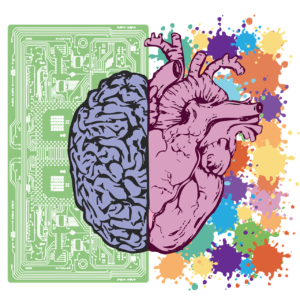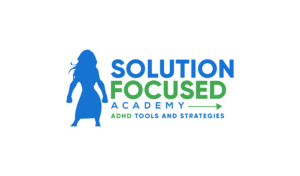Emotions Are Not Data

Emotions happen. We don’t control them. We experience them. Emotions provide us with information about our internal state and our interpretation of our external environment, but they are not data.
In certain circumstances, it makes sense to act in response to an emotion. For example, if you’re walking alone in a dark alley and you feel fear, trust it and choose to leave the dark alley in favor of walking on a populated, brightly lit street.
It’s important to recognize, however, tha
 t our brain can fool us. It can use negative emotionsto erroneously warn us thatwe are in danger of becoming prey or being ostracized, two things humans evolutionarily avoid. In its effort to protect us from death bypredators and from loss of a support system, the brain has developed a negativity bias. We are thus sensitive to and very aware of ournegative emotions and allow them to influence our decisions, our personal boundaries, and our relationships.
t our brain can fool us. It can use negative emotionsto erroneously warn us thatwe are in danger of becoming prey or being ostracized, two things humans evolutionarily avoid. In its effort to protect us from death bypredators and from loss of a support system, the brain has developed a negativity bias. We are thus sensitive to and very aware of ournegative emotions and allow them to influence our decisions, our personal boundaries, and our relationships.
Karen, a recent client, came to coachingwanting to improve her work-life balance. One of the challenges she identified was her inability to set boundaries around her work day. When she transitioned from working in an office to remote work, this became especially difficult. Through our sessions together, she determined that she wanted to clearly define her work hours for herself and for her colleagues and upper management. As a result, she began declining meetings outside of her defined work hours.
In a follow-up session, I checked in with Karen on how holding this boundary around her work hours was impacting her goal of improved work-life balance. Her face dropped, and she lamented, “It isn’t working.”
I probed, “What part of the strategy isn’t working?”
She said, “It isn’t workingbecause I feel bad about declining meetings.” She wanted to drop the whole strategy and try to findsome other way to “feel like” she had work-life balance.
As we explored this deeper, she acknowledged that she in fact was enjoying more time with her family and keeping up better with household tasks as a result of setting boundaries around her work hours. She reported that tension between her and her husband over her work had also decreased. Furthermore, she could not name any concrete negative repercussions at work. Nonetheless, Karen was using her negative emotion as the sole criteria for judging the effectiveness of her strategy.
Do you recognize yourself in this  account? Do you make critical life decisions based on emotional feedback? How can these negative emotions be processed in a meaningful way? What’s a better way to get at useful data points for determining whether what you’re doing is working?
account? Do you make critical life decisions based on emotional feedback? How can these negative emotions be processed in a meaningful way? What’s a better way to get at useful data points for determining whether what you’re doing is working?

First, take some steps to evaluate and manage the emotion itself:
- Pause –
Pausing provides time for your emotional brain to cool down and your logical brain to heat up. - Reflect – Create self-awareness by objectively considering how the emotion influences your physical state, your cognitive state, and your behavioral state. It may enhance your self-awareness to journal your observations.
- Name It – Naming an emotion can tame it. Naming it takes away its power over you.
- Respond – Choose your response with intention. You can choose to do something in response or to do nothing in response. Choosing is the action in both cases.
Next, ask yourself two questions about your strategy to collect information beyond your emotion:
- Did I do the behavior I committedto?
- What observable outcomes did I get as a result?
Together, Karen and I employed these tools to take a 360-degree view of her strategy for improving her work-life balance. She ultimately chose to stick with her boundaries around work hours. She says that she sometimes still feels bad when declining a meeting outside of her work hours, but she uses her new tools to slow down, examine her emotion, and gather accurate data.
How can you use these tools to achieve your goals?


 Stella, a high-achieving entrepreneur in the event planning sector, came to her recent coaching session wanting to figure out how to create “breathing room” between the completion of one major project and the launch of another so that she doesn’t repeat the pattern of cascading from one chaotic situation to the next. Her past pattern of remaining in a constant state of overwhelm leaves her feeling exhausted and drained and puts a strain on her important relationships. She recognizes that she is the source of the barriers to peace and, therefore, she has the power to remove them to make space for a different reality.
Stella, a high-achieving entrepreneur in the event planning sector, came to her recent coaching session wanting to figure out how to create “breathing room” between the completion of one major project and the launch of another so that she doesn’t repeat the pattern of cascading from one chaotic situation to the next. Her past pattern of remaining in a constant state of overwhelm leaves her feeling exhausted and drained and puts a strain on her important relationships. She recognizes that she is the source of the barriers to peace and, therefore, she has the power to remove them to make space for a different reality. Stella agreed that all three phases are critical for her to keep the chaos at bay, yet, in planning for the execution of the final stage, she set it up in a way that prevented her from following through. First, she explained that she doesn’t know how to have fun, so I asked, “What’s more important, for you to have fun or for your children and husband to create a shared memory with you in which they’re having fun?” Perspective-taking is a difficult task for the ADHD brain, so Stella paused to process through this consideration of “fun.”
Stella agreed that all three phases are critical for her to keep the chaos at bay, yet, in planning for the execution of the final stage, she set it up in a way that prevented her from following through. First, she explained that she doesn’t know how to have fun, so I asked, “What’s more important, for you to have fun or for your children and husband to create a shared memory with you in which they’re having fun?” Perspective-taking is a difficult task for the ADHD brain, so Stella paused to process through this consideration of “fun.”